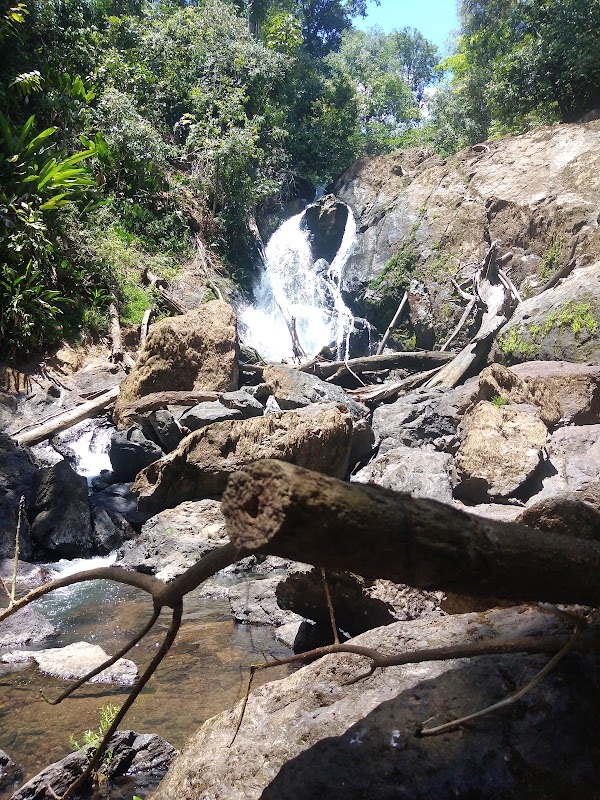Top River and Coastal Adventures Near Corcovado National Park: Kayaking, Snorkeling, and Wildlife Encounters
Explore the thrilling river and coastal adventures around Corcovado National Park, where kayaking through jungle-lined rivers meets snorkeling vibrant Pacific reefs alive with wildlife. This guide offers practical tips and immersive insights to prepare you for a dynamic encounter with one of Costa Rica’s wildest regions.
Start Early to Beat Afternoon Rains
Set out before 8 AM to avoid heavy showers common in the afternoons and to catch the most active wildlife along the rivers and coast.
Use Quick-Drying Footwear with Good Traction
Wet river banks and slippery boat decks require shoes that dry fast and grip well to prevent falls or injuries.
Bring a Dry Bag for Electronics and Essentials
Rivers can splash unpredictably and constant moisture calls for waterproof storage to protect your gear.
Hire Local Guides Familiar with Currents and Wildlife
Their knowledge ensures safety and enhances the chance of spotting elusive animals or hidden snorkeling spots.
Top River and Coastal Adventures Near Corcovado National Park: Kayaking, Snorkeling, and Wildlife Encounters
Corcovado National Park, stretching along Costa Rica's southern Osa Peninsula, challenges adventurers with raw river currents and coastal waters that are fiercely alive. Here, rivers dare you to paddle their winding paths while the Pacific coast beckons with vibrant underwater worlds. Kayakers navigate the Río Tigre and Río Claro, where swift flows push against your stroke, rewarding persistence with glimpses of howler monkeys on riverbanks and caimans cooling in shaded bends. These waterways cover distances ranging from 5 to 15 kilometers, depending on your chosen route, with modest elevation changes but dense tropical forest edges demanding alert attention.
On the coast, the adventure shifts underwater. Coral reefs and rocky outcrops off Drake Bay and Isla del Caño invite snorkelers to discover schools of parrotfish, reef sharks, and the occasional sea turtle gliding smoothly through currents that brush you gently, as if encouraging deeper exploration. Snorkeling spots typically rest within 1 to 3 kilometers from shore, accessible by short boat rides, and the water temperature here stays consistently warm, from 26°C to 29°C, making gear selection straightforward.
Wildlife encounters remain the heartbeat of Corcovado’s appeal. From the river’s edge, watch river otters surface with curious eyes, or spot vibrant scarlet macaws wheeling overhead. These experiences carry the thrill of unpredictability; nature reveals itself on its terms, inviting respect rather than rush.
Successful river and coastal excursions here hinge on preparation. Hydration is key — the humid air and steady physical effort demand frequent water breaks. Footwear with good grip and quick-drying materials guard against slippery, wet paths and boat decks. Timing adventures early in the day avoids afternoon rains and maximizes wildlife sightings, as the forest and sea wake with the slow but steady pulse of morning activity.
Adventure involves measured risk and a readiness to respond to changing conditions. River currents can strengthen after tropical showers, and coastal tides shift suddenly, shaping the routes you take. Guides local to the park bring invaluable knowledge, not just of the terrain, but of the nuanced behavior of its inhabitants.
The draw of Corcovado lies not only in its wild beauty but in the challenge it presents — a reminder that nature here is fiercely itself, not a backdrop to be claimed but a partner in adventure. Whether paddling where rivers weave through rainforest or floating over reefs alive with color, the experience is clear: respect the elements, prepare with care, and let the park’s dynamic spirit transform your journey.
Nearby Trips
All Adventures
Boat Charters
Water Activities
Adventures near Puerto Jiménez
Discover the unique and memorable adventures that make Puerto Jiménez special.
Frequently Asked Questions
What is the best way to access kayaking routes near Corcovado?
Most kayaking routes start from Puerto Jiménez or nearby river docks. Hiring local guides or operators is recommended for safe entry points and route planning.
Are there any safety concerns with wildlife during these water activities?
While wildlife encounters are common and exciting, maintain a respectful distance. Watch for caimans in some river sections and be cautious if currents increase after rain.
Can beginners safely participate in these kayaking and snorkeling adventures?
Yes, many operators cater to beginners with sheltered routes and thorough safety briefings, but basic swimming ability and comfort on water are advised.
What kind of marine life should snorkelers expect off Drake Bay?
Expect to see colorful reef fish, parrotfish, sea turtles, eagle rays, and occasionally nurse sharks, particularly around rocky reefs and Isla del Caño.
Is it necessary to bring your own snorkeling gear?
Most tours provide quality snorkeling equipment, but bringing personal masks ensures the best fit and comfort.
How do seasonal changes affect river navigation near Corcovado?
During heavy rains, river currents strengthen, making navigation more challenging. The dry season lowers water levels, which can expose obstacles but make some routes easier.
Recommended Gear
Lightweight Kayak Paddle
Helps maintain energy over longer distances and variable currents.
Reef-Safe Sunscreen
Protects your skin and preserves coral health during snorkeling.
Waterproof Dry Bag
Keeps electronics and essentials safe from splashes and rain.
Breathable, Quick-Drying Shoes
Essential for wet, slippery terrain along rivers and coastal paths.
Local Insights
Hidden Gems
- "La Leona Waterfall viewpoint offers a rarely visited vantage point over the park's southern forests."
- "The Rio Claro mangrove estuaries harbor quiet birdwatching spots away from common tourist trails."
Wildlife
- "Rewarded observers may spot endangered tapirs near riverbanks during early mornings."
- "Shy giant river otters often surface in small family pods along quieter tributaries."
History
"Corcovado was the focus of intense conservation efforts starting in the 1970s to protect one of Costa Rica's most biodiverse regions, once threatened by logging and agricultural expansion."

